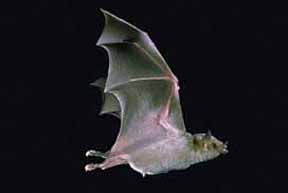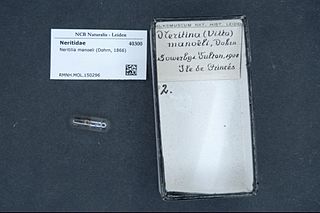
The macaques constitute a genus (Macaca) of gregarious Old World monkeys of the subfamily Cercopithecinae. The 23 species of macaques inhabit ranges throughout Asia, North Africa, and Europe. Macaques are principally frugivorous, although their diet also includes seeds, leaves, flowers, and tree bark. Some species such as the long-tailed macaque will supplement their diets with small amounts of meat from shellfish, insects, and small mammals. On average, a southern pig-tailed macaque in Malaysia eats about 70 large rats each year. All macaque social groups are arranged around dominant matriarchs.

The conservation status of a group of organisms indicates whether the group still exists and how likely the group is to become extinct in the near future. Many factors are taken into account when assessing conservation status: not simply the number of individuals remaining, but the overall increase or decrease in the population over time, breeding success rates, and known threats. Various systems of conservation status are in use at international, multi-country, national and local levels, as well as for consumer use such as sustainable seafood advisory lists and certification. The two international systems are by the International Union for Conservation of Nature (IUCN) and The Convention on International Trade in Endangered Species of Wild Fauna and Flora (CITES).

A conservation-dependent species is a species which has been categorized as "Conservation Dependent" ("LR/cd") by the International Union for Conservation of Nature (IUCN), as dependent on conservation efforts to prevent it from becoming endangered. A species that is reliant on the conservation attempts of humans is considered conservation dependent. Such species must be the focus of a continuing species-specific and/or habitat-specific conservation program, the cessation of which would result in the species qualifying for one of the threatened categories within a period of five years. The determination of status is constantly monitored and can change.

An IUCN Red List Critically Endangered species is one that has been categorized by the International Union for Conservation of Nature as facing an extremely high risk of extinction in the wild. As of December 2023, of the 157,190 species currently on the IUCN Red List, 9,760 of those are listed as Critically Endangered, with 1,302 being possibly extinct and 67 possibly extinct in the wild.

The Proserpine rock-wallaby is a species of rock-wallaby restricted to a small area in Conway National Park, Dryander National Park, Gloucester Island National Park, and around the town of Airlie Beach, all in Whitsunday Shire in Queensland, Australia. The etymology of the name is from Greek mythology in the form of the tale of Persephone, or Proserpine to the Romans, as well as from the location they were discovered. With its mythological background, the name symbolizes the fortuitous finding of the species at the beginning of spring and the restoration of knowledge of the species to mankind. It is a threatened species, being classified by the IUCN as endangered.

Notiosorex cockrumi, also called Cockrum's gray shrew or Cockrum's desert shrew, is a tiny species of shrews named in 2003. This red-toothed shrew, which is as light as a penny, is the first new mammal species from Arizona since 1977. Its range extends from Arizona to central Sonora, Mexico.

The Mexican vole is a species of vole.

Cheirolophus crassifolius, the Maltese centaury, Maltese rock-centaury or Widnet il-Baħar, is a species of flowering plant in the family Asteraceae. It is endemic to Malta, where it has been the national plant of Malta since 1973. Its natural habitats are cliffs and coastal valleys. It is threatened by habitat loss.
Tectiphiala ferox, or palmiste bouglé, is a species of flowering plant in the family Arecaceae. It is endemic to Mauritius.

Crocidura grandiceps is a species of mammal in the family Soricidae. It is found in Benin, Ivory Coast, Ghana, Guinea, Liberia, Nigeria, and Togo. Its natural habitat is subtropical or tropical moist lowland forests. It is threatened by habitat loss due to agriculture and aquaculture as well as logging and wood harvesting. To increase habitat protection for the C. grandiceps, in-place land/water protection conservation actions are in place. The vernacular name large-headed shrew is sometimes applied to C. grandiceps but has also been used for the entire related genus Paracrocidura. The IUCN List categorizes the C. grandiceps as Near Threatened as of 2008.

The greater long-nosed bat or Mexican long-nosed bat is a species of bat in the family Phyllostomidae. It is found in Mexico and the United States. It chiefly consumes pollen and nectar, particularly from agave plants and cacti. Its habitat includes desert scrub and open woodlands, however, it is threatened by habitat loss.

Neritilia manoeli is a species of minute freshwater snail with an operculum, an aquatic gastropod mollusc or micromollusk in the family Neritiliidae.
Beilschmiedia preussii is a species of plant in the family Lauraceae. It is endemic to Cameroon. Its natural habitat is subtropical or tropical dry forests. It is threatened by habitat loss.
Bulbophyllum platybulbon is a species of plant in the family Orchidaceae. It is native to Cameroon and Gabon. Its natural habitat is subtropical or tropical dry forests. It is threatened by habitat loss.
Camptostylus ovalis is a species of plant in the family Achariaceae. It is found in Cameroon and Nigeria. Its natural habitat is subtropical or tropical dry forests. It can grow up to 30 feet tall. It is threatened by habitat loss.
Aristolochia preussii, synonym Pararistolochia preussii, is a species of plant in the family Aristolochiaceae. It is native to Cameroon, Equatorial Guinea, Gabon, and Ivory Coast. Its natural habitat is subtropical or tropical dry forests. It was assessed as "critically endangered" and threatened by habitat loss in the 2000 IUCN Red List, where it is said to be native only to Cameroon., Plants of the World Online gives it a wider distribution.

Tetrataxis is a genus of plant in family Lythraceae. The sole species is Tetrataxis salicifolia. It is endemic to Mauritius. Its natural habitat is subtropical or tropical dry forests.
Wikstroemia skottsbergiana, also called Skottsberg's false ohelo and Skottsberg's wikstroemia, is a species of flowering plant in the family Thymelaeaceae. It is endemic to the island of Kauaʻi in Hawaiʻi, but its range has been severely reduced due to habitat loss. Only one small population of 30 individuals is known, but access to this location has not been permitted to conservationists since 2000, and the habitat surrounding this area has become heavily degraded over the years, raising fears that it may be extinct.

A vulnerable species is a species which has been categorized by the International Union for Conservation of Nature as being threatened with extinction unless the circumstances that are threatening its survival and reproduction improve.

Uvariastrum pierreanum is a species of plant in the Annonaceae family. It is native to Cameroon, the Central African Republic, the Democratic Republic of the Congo, Equatorial Guinea, Gabon, Ghana, Guinea, the Ivory Coast, Liberia, Nigeria, Sierra Leone and the Republic of the Congo. Adolf Engler, the botanist who first formally described the species, named it after the French botanist Jean Baptiste Louis Pierre.











